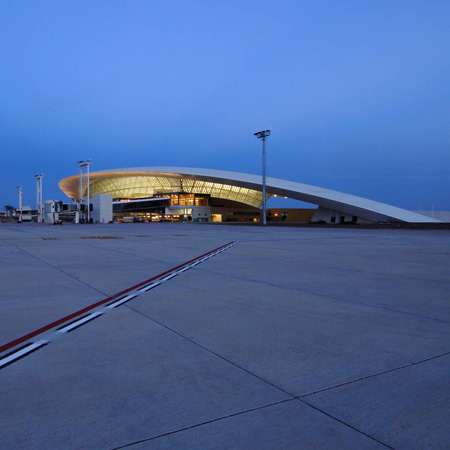
Carrasco International Airport by Rafael Viñoly
New York architects Rafael Viñoly have completed an airport with a curved roof in Montevideo, Uruguay.
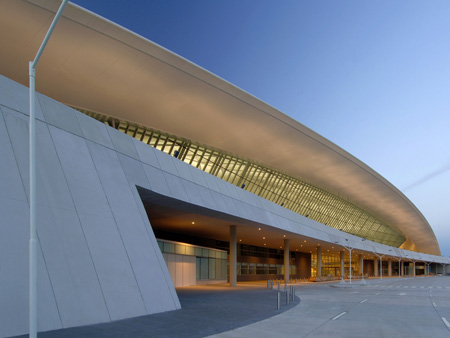
Called Carrasco International Airport, the project features a curved roof spanning over 365 metres.
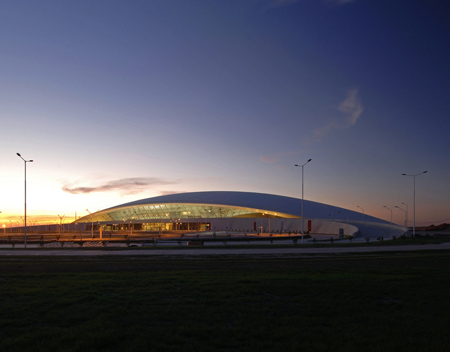
Arrivals pass through a glazed mezzanine level before descending to the ground floor and departures are processed on the first floor.
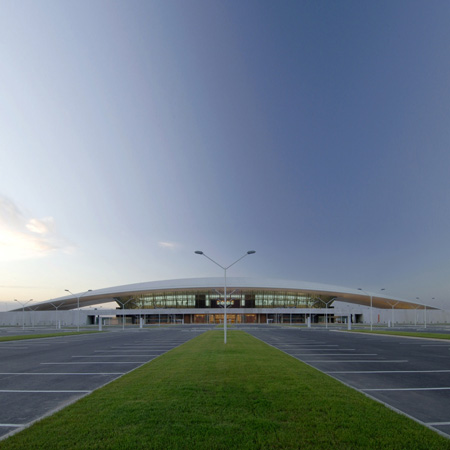
A public terrace and restaurant on the second floor provide views over the runway and concourse.
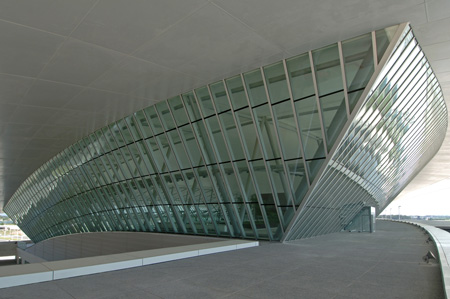
The airport is due to open next month.
Here's some more information from the architects:
--
RAFAEL VIÑOLY DESIGNS NEW CARRASCO INTERNATIONAL AIRPORT IN MONTEVIDEO, URUGUAY
Rafael Viñoly Architects has designed the new Carrasco International Airport in Montevideo, Uruguay. This is the firm’s first completed airport and its largest project in Viñoly’s home country. The airport will become operational in December this year.
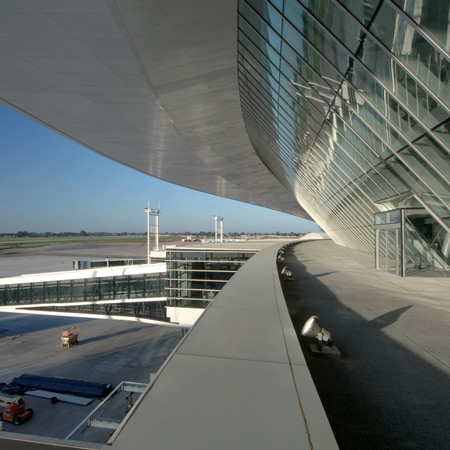
The new terminal at Carrasco International Airport, which serves Uruguay’s capital city of Montevideo, was created to expand capacity and spur commercial growth and tourism in the surrounding region. The design of the building emphasizes its public zones and amenities, providing these areas with an abundance of open space and natural light. Arriving travellers, for example, pass through a fully glazed mezzanine level that helps orient them to the terminal space before they descend to immigration, the baggage claim, and customs. A public, landscaped terrace and a restaurant occupy the second floor, providing sweeping views of the runway and the main concourse.
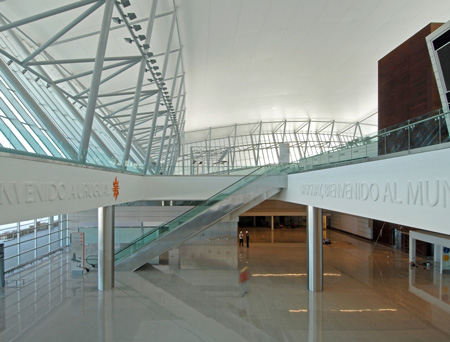
Rafael Viñoly Architects’ design elevates the public zones, both on the fully accessible roadside departure hall and terrace and the secure runway-side concourses, and houses everything beneath a curved, 1,200-foot-long roof. The gentle curve and low profile of this monolithic roof help integrate the building into its site. The exterior’s flowing lines and undulating geometry resemble the natural landscape of Uruguay, making it not only an iconic architectural structure, but a symbolic one as well.
Inside the building, arrivals and departures are separated vertically: arrivals on the ground floor, and departures on the first floor, with vehicular access roads for passenger drop-off and pick-up servicing each level independently. An open atrium adjacent to the street entrance opens the ground floor to the monumental space of the main hall, visually and spatially linking the beginning and ending stages of a traveler’s journey. The roof provides a canopy over these access roads on the land-side of the building, and on the air-side it opens up to give wide views of the airfield and countryside beyond.
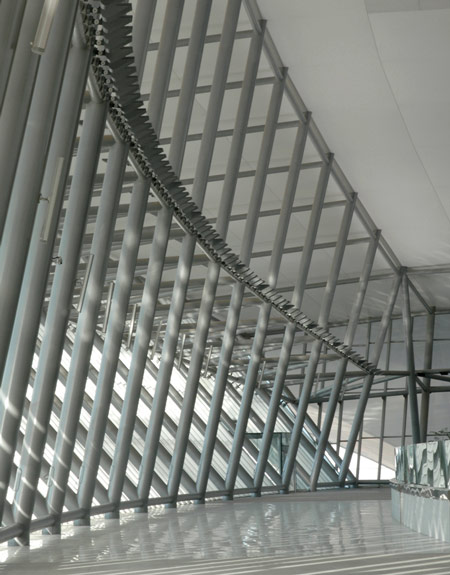
In keeping with a long tradition of grand transportation halls, the departures level is one large space. With glazing on all four sides and thin structural supports, the roof appears to float above the building. The departures level features the public concourse and the secure passenger concourse; each is separated by the security checkpoint and immigration control at the center of the plan. After completing check-in and security procedures, departing travelers have access to duty-free shopping and restaurants in the waiting areas. Four fixed, elevated pedestrian bridges with articulating corridors, accommodating a total of eight passenger gates, connect the passenger concourse to narrow- and wide-body aircraft and provide access to the apron for smaller planes.
“In Uruguay, friends and family still come to greet you at the airport or see you off,” says Rafael Viñoly, “so this terminal provides great spaces for the people who aren’t travelling as well as those who are. The atrium, the main hall, the terrace, and the passenger concourse make this a dramatic and welcoming place for everyone.”